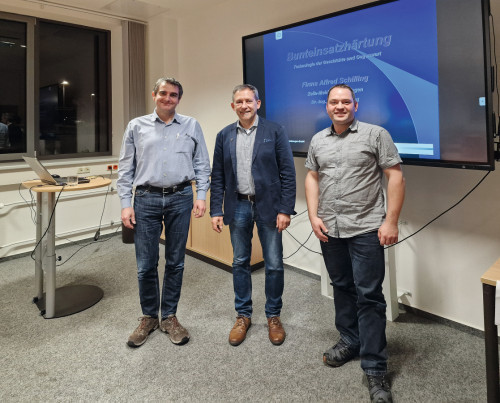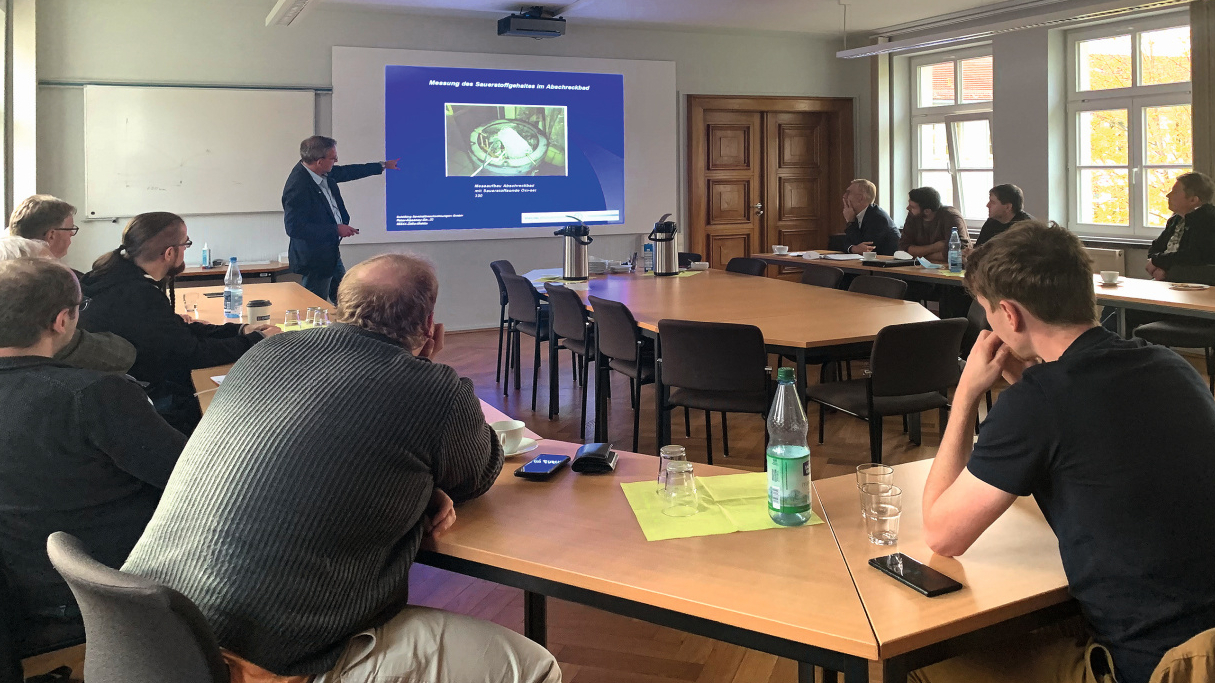"Color case hardening - alchemy or modern surface technology?" A lecture topic with charisma, not least because the term alchemy in the title resonates with the mythological image of electroplating technology. In October, Dr. Schilling spoke at the DGO Saxony district group event in Chemnitz about an ancient process that is now used in a reproducible manner and offers further potential.
After a break of two and a half years due to the pandemic, the first DGO district group event (DGO-BG) at Chemnitz University of Technology, Chair of Materials and Surface Technology, was held in person again on October 13, 2022. Dr. Jörg Schilling from the company Alfred Schilling gave a lecture on "Colour case hardening - alchemy or modern surface technology", a topic he had already spoken about at the BG Thuringia on 08.11.2022 in Ilmenau. Color case hardening is a traditional process for surface finishing on hunting and sporting weapons. At the beginning of his lecture, Schilling presented a series of application examples with impressively designed weapon parts. Some of these weapon parts are decorated with unusual engravings and/or inlays. Color case hardening for hunting and sporting weapons has been known for around 200 years. The Schilling family name has been associated with the manufacture of weapons and small arms for many generations. With the end of the Second World War and the resulting ban on the manufacture of weapons of all kinds in Germany, the company had to move into other areas of business.
 Dr. Jörg Schilling did not only give lectures in Saxony. The picture shows him in Ilmenau, Thuringia, with Prof. Andreas Bund (left) and (right) Mathias Fritz, head of BG ThuringiaUntilthe company was nationalized in 1972, it successfully produced mass-produced turned parts for many branches of industry. The company was reprivatized in 1994, marking a new beginning in the field of colour case hardening of weapon parts. Synergies could be created through the weapons production located in Suhl/Zella-Mehlis for many years. Color case hardening involves cementing the outer edge zone of ferrous materials, Schilling continued. Charcoal granules or mixtures of bone charcoal and charcoal are used as the carbonization medium. After heating in the charcoal, the weapon parts are quenched in water. This produces the inimitable marble colors that make each piece unique. The cooling behavior of different wall thicknesses and part geometries creates the beautiful cloudy, marbled colors, with brown representing the thinnest layer thickness and yellow the thickest. The microcrystals that form in the color-hardened surface act like small optical prisms. This is why the typical color-hardened colors always appear the same with the matt, elegant finish, regardless of the viewing angle.
Dr. Jörg Schilling did not only give lectures in Saxony. The picture shows him in Ilmenau, Thuringia, with Prof. Andreas Bund (left) and (right) Mathias Fritz, head of BG ThuringiaUntilthe company was nationalized in 1972, it successfully produced mass-produced turned parts for many branches of industry. The company was reprivatized in 1994, marking a new beginning in the field of colour case hardening of weapon parts. Synergies could be created through the weapons production located in Suhl/Zella-Mehlis for many years. Color case hardening involves cementing the outer edge zone of ferrous materials, Schilling continued. Charcoal granules or mixtures of bone charcoal and charcoal are used as the carbonization medium. After heating in the charcoal, the weapon parts are quenched in water. This produces the inimitable marble colors that make each piece unique. The cooling behavior of different wall thicknesses and part geometries creates the beautiful cloudy, marbled colors, with brown representing the thinnest layer thickness and yellow the thickest. The microcrystals that form in the color-hardened surface act like small optical prisms. This is why the typical color-hardened colors always appear the same with the matt, elegant finish, regardless of the viewing angle.
Schilling carried out several years of research at the Institute for Materials Management and Materials Technology at Friedrich Schiller University in Jena on the use of different types of steel and coal with different carbon contents, the influence of temperature, different hardening times and the quality of the quenching water and its effect on color formation. With the help of these investigations and today's technical possibilities of temperature control, Schilling has made color case hardening, as it is carried out in his company, reproducible in terms of color parameters. Maintaining the quenching temperature and uniform cooling are essential.
After the long break, it was a very interesting topic that the electroplating technician does not encounter every day. Schilling showed how multifaceted surface technology is. The process is conceivable for other applications. Schilling is looking for further areas of application and is always open to inquiries.


